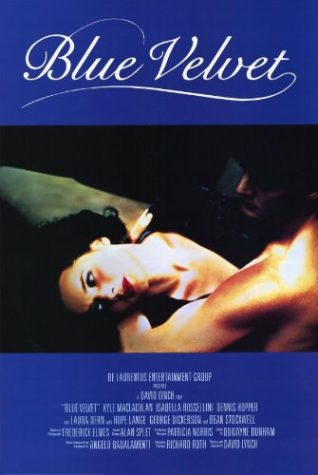Blue Velvet (1986) review
Harry Westergaard, owner of review blog harrywestergaard, shares his thoughts on the movie, Blue Velvet
 The discovery of a disembodied ear in a field leads Jeffrey Beaumont to discover the mystery behind it. In doing so, he begins to find himself engulfed in the darker side of his home town. The search leads him to night club singer Dorothy Vallens and her abuser Frank Booth. Jeff is now in so far that there’s no turning back, and must act carefully. So goes the plot of David Lynch’s 1986 film Blue Velvet. Blue Velvet is Lynch’s fourth feature length film. Upon release in 1986 the film surprised audiences and critics with its stark imagery and deep subject matter. 30 years later the film is looked back on as a cult classic, and one of Lynch’s finest films.
The discovery of a disembodied ear in a field leads Jeffrey Beaumont to discover the mystery behind it. In doing so, he begins to find himself engulfed in the darker side of his home town. The search leads him to night club singer Dorothy Vallens and her abuser Frank Booth. Jeff is now in so far that there’s no turning back, and must act carefully. So goes the plot of David Lynch’s 1986 film Blue Velvet. Blue Velvet is Lynch’s fourth feature length film. Upon release in 1986 the film surprised audiences and critics with its stark imagery and deep subject matter. 30 years later the film is looked back on as a cult classic, and one of Lynch’s finest films.
The film stars Kyle MacLachlan as the main character, Jeffrey Beaumont. MacLachlan is good in the role as Jeff, but the real standout is Dennis Hopper as the film’s villain, Frank Booth. Hopper plays the role with a lot of energy and conviction. When Frank comes on screen you feel his evil, psychotic presence. Isabella Rossellini gives a strong performance as Dorothy Vallens. You can tell by her expression alone the tragedy that is going on in her life throughout the film. Laura Dern is okay as Sandy. She has a couple good scenes near the end, but on the whole she comes across as interchangeable. Another great touch is Angelo Badalamenti’s fantastic score. Badalamenti also scored Lynch and David Frost’sTwin Peaks in 1990-91. His score here is very effective at helping build emotion in the film. We get some hints of jazzy Peaks music in some of the more light hearted scenes near the beginning, and on the whole he does a good job at establishing the dream-like (and at times nightmarish) mood of the film.
The film is of course directed by David Lynch and you can definitely tell. Lynch is known for creating very distinct and atmospheric worlds in his catalog of films. This film is a good example of his style. While not as surreal as Lynch’s Eraserhead and Mulholland Drive, the film is littered with clever and dynamic shots that put you into different perspectives. An example being one of the opening shots which takes the viewer through grass, or the shots in Jeff’s car that are shot from the back seat or Sandy’s entrance from the darkness. The scenes in Dorothy’s apartment are tense and keep you at the edge of your seat, as you wait for MacLachlan to be discovered in his hiding place any moment. The shot of MacLachlan staring through the closet is inspired and has become somewhat iconic (rightfully so).
We get a feeling for the different and distinctive moods for the film by the lighting. It’s brighter early on to show the lighter mood, but as Jeff digs deeper into the ugly side of Lumberton the film gets darker.
The film has many symbolic scenes and underlying themes but it boils down to being about the darkness in this world and how it is always conquered by love. In a crucial scene, Sandy tells Jeff about a dream she had where Robins (representing love) lighten up a dark and dismal world. The film begins with bugs and ends with Robins, one of which is a eating bug. Thus, love conquering evil.
Blue Velvet is definitely an experience. Whether it’s a pleasant one or a horrific one is up to the viewer. With solid acting, a great score, and visuals from Lynch that will stay with the viewer years after viewing, Blue Velvet is a classic in visual storytelling that still holds up 30 years later.
9/10
Visit https://harrywestergaard.wordpress.com/ to read more reviews by Westergaard.
Your donation will support the student journalists of West High School. Your contribution will allow us to purchase Scholarship Yearbooks, newsroom equipment and cover our annual website hosting costs.

Harry Westergaard is a senior at West High and this is his third year on staff. He does a little bit of everything on staff, working primarily as the Arts...


